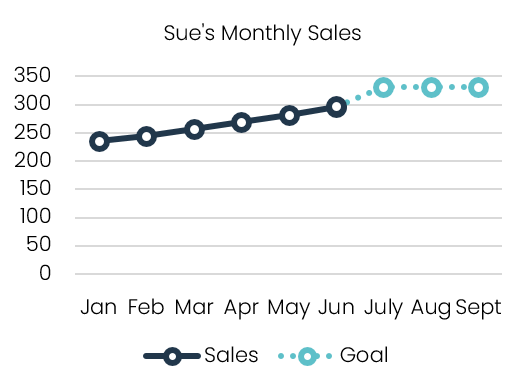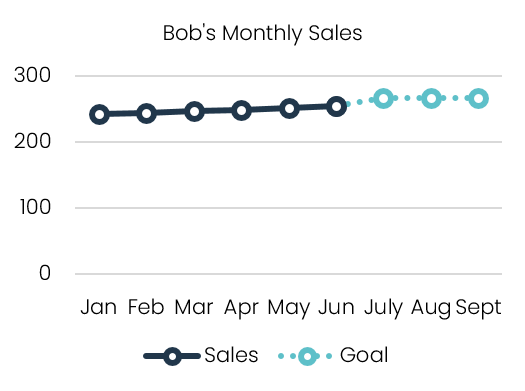Four Indicators that It’s Time to Change Your Sales Compensation Plan
With 2025 sales compensation planning underway, many biopharma companies are considering whether or not they should change their sales compensation plan and, if so, how much. A sales compensation plan that is not motivating the sales force as well as it could be is ultimately leaving sales on the table, and there are several indicators that companies can look to in order to help determine if it is time to change their sales compensation plan. In this blog post, we will explore four such indicators that it is time to change your sales compensation plan.
Indication 1: Too Many Sales Representatives Not Earning Bonus
The first indicator that there is room for improvement in a sales compensation plan is that too many members of the sales force are not earning any bonus. The portion of sales representatives falling into this category should never be more than 10% on any given product. Common scenarios in which this occurs are a payout threshold set too high, ranking levels that pay no bonus to those in the bottom level, and national goals set too high.
<10%
The proportion of sales representatives not earning bonus should never be more than 10% on any given product
When sales representatives are not making a sales compensation bonus on any given product, they become demoralized and discouraged. They likely abandon the product with which they believe they will not earn bonus and concentrate efforts on other product(s) with which they believe they can earn bonus. When this happens, it is not just the sales representative who suffers lost earnings; the company itself faces lost sales on the abandoned product.
Companies invest significant resources in their sales representatives—salaries, cars, samples, etc. It is imperative that every sales representative is engaged, motivated and driving sales at all times. If sales representatives are not earning bonus as a result not of their performance but a poorly designed sales compensation plan, then they will very likely seek out a new job and leave the company. This leads us to our next indicator: a high sales force turnover rate.
Indication 2: High Sales Force Turnover Rate
If a sales force is experiencing a turnover rate in the neighborhood of 10% or more, then that is an indication that it is time to change the sales compensation. Contrary to popular belief, it is oftentimes not the bad sales representatives who leave the company, but the good sales representatives. Bad sales representatives tend to be grateful to have a job and aren’t motivated enough to seek out new jobs. The sales representatives who leave are the ones who have initiative and are eager to prove themselves. When quality sales representatives are toiling under an unfair sales compensation plan, they become demoralized and seek out another company that will recognize their true talent.
Sales representatives seek out new jobs for many reasons—inconvenience of travel, opportunity to work in a more ideal geographical area, desire for a new challenge in a different market—but sales compensation should rarely ever be a motive for leaving. If sales compensation is causing sales representatives to leave the company, then it is time to change the sales compensation plan.
Indication 3: Performance Differences Across Products, Regions and Sales Forces
The next indicator that it is time to change the sales compensation plan is if there are performance differences across products, regions or sales forces.
Products
Related to the first indicator we explored, performance differences across the products a sales force is carrying signify that something is wrong with the sales compensation plan. Though this could indicate that goals are not being set optimally, it could also mean that the weights and payouts for performance are not consistent with the amount of work it takes to sell each product.
Region
If one or two regions differ significantly in performance from all the other regions, then that is an indication that there may be a problem with the sales compensation plan and it should be changed. The likely reason is that the plan has regional biases—such as initial volume, market share, etc.—that place some regions at an advantage and others at a disadvantage.
Sales Forces
Another area is whether performances across sales forces are similar. One sales force should not be making large bonuses while another is making small bonuses. Such inequity oftentimes leads to dissent and disillusionment. Sales compensation plans must be consistent in equity across sales forces such that sales forces have equal chances of reaching similar levels of performance.
Indication 4: Representative Performances that Fluctuate Too Much or Too Little
The final indicator is twofold, the first of which shares much in common with the previous indicator we explored. Just as how there should not be wide differences in performance across products, regions or sales forces, so too should there not be wide differences in an individual sales representative’s performance plan period to plan period. Such flip-flopping means that the sales compensation plan is not rewarding true performance, but merely performance relative to a base that penalizes last period’s top performers and rewards last period’s poor performers.
For example, consider goals based on territory sales trends. Sue in Territory A has increased sales over the last quarter by 15% while Bob in Territory B has increased sales by 3%. Goals are set such that each territory must improve whatever performance trend was achieved last quarter by 2%. This means that Sue is expected to increase her performance from 15% growth to 17% growth while Bob is expected to increase his performance from 3% growth to 5% growth. This ultimately penalizes Sue for her good performance last period and rewards Bob for his mediocre performance.
Alternatively, the other side to this indicator is lack of variation in an individual sales representative’s performance, most often materializing as a sales representative being among the top performers plan period after plan period. Such entrenchment is an indicator of a sales compensation plan that, in contrast to flip-flopping, is not rewarding true performance, but merely performance relative to a base that rewards last period’s top performers and penalizes last period’s poor performers. In this case, the sales compensation plan becomes more of an entitlement program for a small selection of sales representatives. The sales compensation plan must be designed such that every sales representative has an equal opportunity to earn the same amount of compensation.
Conclusion
As 2025 sales compensation planning ramps up, be sure to consider these four indicators as you determine whether or not to change your sales compensation plan. Not only do these indicators signify that a sales compensation plan is not motivating the sales force as much as it could be, but also that the company is leaving money on the table. These indicators only scratch the surface of analyzing sales compensation effectiveness, so it’s always best to conduct a full diagnostic assessment such as our SCOR³ES® evaluation that indicates not only whether than plan should be changed, but, more specifically, but which areas should be changed to improve plan effectiveness. Only then can you truly address weaknesses and design an effective sales compensation plan.











